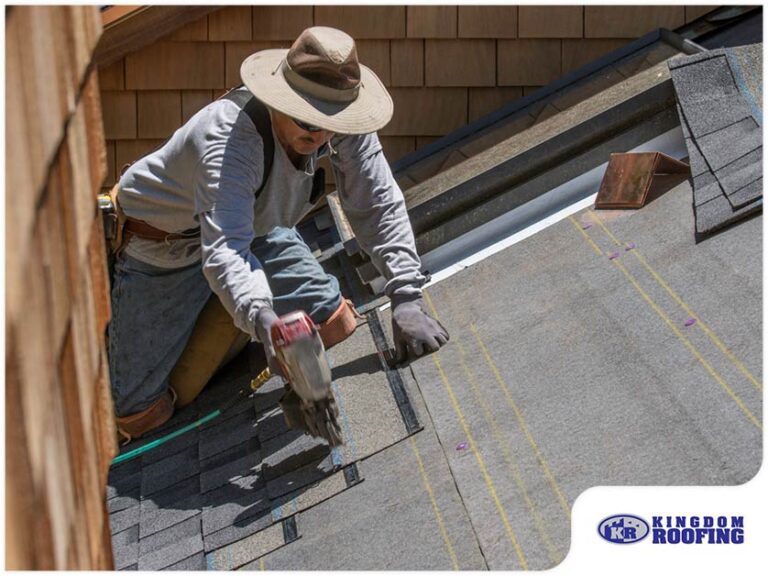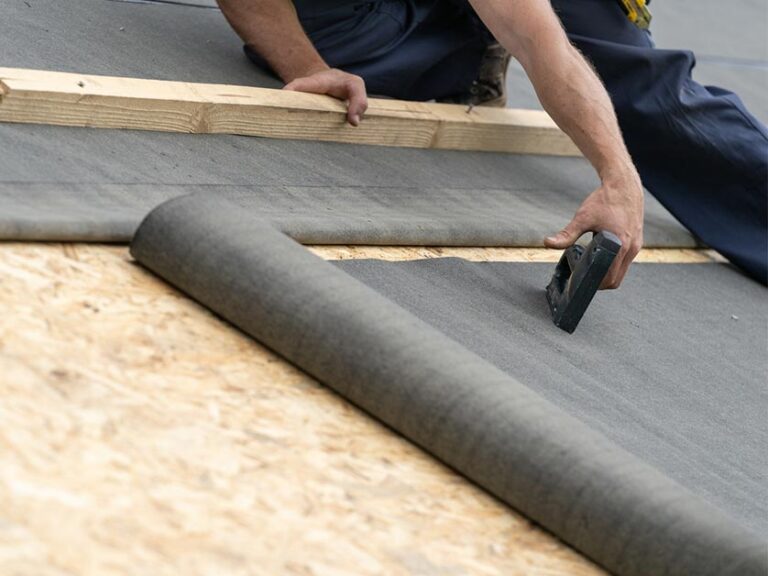Planning your roof replacement budget is an exercise in balancing several factors, from material selection to logistics. In this blog post, residential roof repair and installation company [company_name] examines these factors and shares insight on how you can help keep your roof replacement project on track and within budget.

Key Factors to Consider
Take the time to weigh the following factors when planning your replacement budget.
-
Roofing material. The roofing material you choose can significantly affect the overall cost of your project. Material prices are listed per square foot, which means a few dollars of difference can add up, and they can make a significant difference when you have a bigger-than-average roofing area. When comparing material prices, use a spreadsheet to multiply the list price and your roof’s square footage.
-
Availability. Always have backup choices when shortlisting your roofing materials, and make sure you are choosing from an updated list or catalog. If your only choice happened to be unavailable, you won’t have to redo your material selection. Most manufacturer websites require you to enter a zip code so they can display roofing options available to roofers in the area. To further ensure availability, work with a manufacturer-designated or certified roofer.
-
Roof area. As discussed above, roof area is one of the key factors that affect the roofing cost. Simply put, the greater the square footage, the higher the cost reflected in the bill of materials. This extends to other components like the underlayment and fasteners, as well as the decking, if the roof needs new ones.
-
Roof pitch. Steeply-pitched roofs have a greater square footage, which translates to more roofing materials. Pitch will also affect your material selection, as not all materials are suitable for certain slopes.
-
Gutters. Gutters are often considered as a separate system, but when choosing the right gutter size, roof slope or pitch needs to be taken into account. The steeper the roof, the higher the rate the gutters will be filled with water, which means if your project involves increasing the roof pitch, you’ll likely need a new set of gutters.
-
Unique roofing features. Features such as skylights or dormers will require more labor and additional materials such as flashing, which will also need to be factored into your budget.
-
Ventilation. A standard attic ventilation system consists of exhaust vents at the highest points of the roof and intake vents at the lowest points, or the ridges and the soffits, respectively. This passive type of ventilation should be enough for most average-sized roofs. If your roof is not getting enough airflow despite properly-sized vents, then exhaust fans or ventilators will have to be installed. It’s important to note that there are building codes that pertain to the required type and number of ventilators.
-
Existing damage. Certain parts of the roof, like the decking, are hidden from view until the outer layers are dismantled. It’s not unusual for roofers to find problems — rot, torn underlayment, the previous owner’s DIY repair work — while roof replacement is already underway. In such situations, repair costs are tacked onto the final estimate, thereby raising the overall cost.
-
Labor. It goes without saying that labor costs vary between contractors. However, in the building industry, the phrase “you get what you pay for” certainly applies. Skimping on the labor by hiring inexperienced contractors can result in various repair jobs down the line stemming from poor installation work.
-
Season and weather. The summer season is the busiest time for roofing contractors, and building contractors in general. Higher demand for materials and labor, and the costs associated to keep delays to a minimum, can result in a higher upfront cost. Instead, consider having your roof replaced off-season.
Tips for a Cost-Effective Roof Replacement
Keep your roof replacement budget manageable with these tips:
-
Read and understand your warranty coverage. Limited warranties vary between manufacturers and contractors. Some offer different levels of coverage at cost. Before signing the roofing contract, make sure that you’ve read and understood the warranty coverage and that it is the level that you intended to get. Pay attention to whether the coverage includes labor and accessories. Look for workmanship or installation coverage, as this is your assurance that problems arising from installation mistakes will be covered.
-
Don’t choose your contract based on the price. It may sound counterintuitive — we are, after all, discussing how to manage your roofing budget — but don’t pick an estimate based on a low cost. Weigh all the factors we discussed above and choose the best option that fits your budget. Remember, roofing decisions are ones that you will live with for the next 20 years or so.
-
Choose quality materials. Choosing your roofing materials based on price can lead to problems down the line. More durable materials cost more per square foot because they’re made to be more durable, which contributes to better performance and long life span. For example, laminate or architectural asphalt shingles cost more than traditional three-tab shingles because they are made from two layers of material.
-
Work with an experienced roofer. We have touched upon how working with inexperienced contractors can result in more repairs down the line. This is why you have to be careful when choosing your roofing contractor: examine their company history, call their references, and read their customer feedback. Looking for a manufacturer certification or designation can help you narrow down your search because manufacturers have strict requirements. These are, after all, contractors that will represent their brand. In our case, [company_name] is a GAF Master Elite® roofing contractor, the highest designation by industry-leading roofing manufacturer GAF.
-
Allow some headroom. Always allow some headroom with your budget. We’ve discussed how situations like unplanned repairs can be tacked on the final bill, and it always helps to be prepared for them. An “emergency budget” is ideally worth about 10% to 20% of the upfront cost.
If you’re looking for an experienced contractor in Venice, FL to help with your roof replacement project or residential roof repairs, look no further than [company_name]. Our team is dedicated to providing quality service at competitive prices. Contact us today at (941) 217-2411 to learn more about our services or to get a free estimate.



